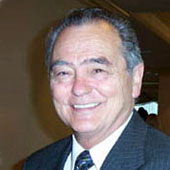Hispanic Youth to America’s Rescue?
How can the United States solve its impending Social Security crisis?
September 22, 2004
Harvard professor Samuel P. Huntington suggested that the United States ignores the dual culture of U.S. Hispanics — the "Hispanic Challenge" — at its own peril.
He is absolutely right – but not for the reasons he promotes.
Rather, the real challenge for U.S. society is how to give young Hispanics the skills they will need to support the country's aging non-Hispanic white population.
The peril faced by the White Anglo-Saxon Protestant (WASP) part of the population described by Huntington is that they are aging very fast — and that their social security benefits will depend on the earning power of young U.S. Hispanics to a degree that few Americans today realize.
To illustrate why, consider that in 1950, there were 16 workers for each person receiving social security retirement benefits. That figure had dropped to 3.3 workers per beneficiary by 1994.
And the ratio between workers and recipients will only drop further. By 2025, there will be down to two workers — and by 2050 to 1.3 workers per recipient.
This is where the Hispanic population comes in, which overall is much younger than the non-Hispanic white population.
Among Hispanics, 48% are under 25 years old and only 19% are 45 or older. There are 2.6 young Hispanics for every mature Hispanic worker or retiree.
Among non-Hispanic whites, the numbers are very different: 32% are under 25, while 38% are 45 or older. That adds up to less than one young person for every mature worker or retiree.
This obviously means that Hispanics will play a disproportionately large future role in financing social security benefits for elderly Americans.
The problem is that Hispanics make less money on average — and thus pay fewer contributions into the system than many of the non-Hispanic white Americans who will be retiring soon.
Presently, the three-year annual average earning of non-Hispanic whites is $47,194 —while the average for Hispanics is $33,946.
The combination of social security taxes paid by employee and employers amounts to 15.3% of income, up to a level of $87,900.
Because of their higher average incomes, non-Hispanic whites on average pay $7,220 in social security taxes each year, while Hispanics only pay about $5,193 — a difference of $2,027.
This may not seem like much, but it adds up to a difference of $2 billion or more for every one million workers.
When today's non-Hispanic white workers reach retirement age and start collecting their social security benefits, the working-age population will be far more heavily Hispanic than today.
The real challenge is to prepare today's young people so that they will have high future earnings, generating ample tax revenue with which to cover the social security promises to today's workers. This means that special attention must be given to preparing Hispanic youth for high-paying jobs.
Elected officials are far more preoccupied with "solutions" to the social security financing problem — like private accounts — that fix nothing fundamentally.
Over the years, various stopgap measures have been introduced: Taxes have been raised, as have taxable earnings. Benefits have been reduced as well, by postponing the age of retirement.
In 2004, full benefits are obtained at age 65 and four months. Each year, this retirement age will increase by two months — until full benefit retirement age will have reached 67.
For today's workers, this amounts to a benefit reduction combined with an additional two years of contributions.
Without raising taxes again or increasing retirement age any further, there are two alternatives left, both of which are important for all Americans — but especially for Hispanics.
The first is to invest in the education and preparation of U.S. youth to achieve higher earnings and higher contributions.
The second is to increase the number of young immigrants allowed into the United States.
They can carry part of the load by raising the number of available workers per retiree.
Investing in better educating and preparing Hispanic youths should be considered not as a favor to Hispanic-Americans, but as an investment in the national economy and the national retirement plan.
Presently, 21.8% of Hispanics possess only elementary education. This has to undergo a dramatic change in the next 10-15 years. And greater emphasis must be placed on education for the trades.
Not everyone is destined for college, and there are huge numbers of well paying jobs in the trades — but little educational emphasis and attention is paid to this type of preparation.
To retirees, it makes little difference whether the workers paying their retirement benefits speak Spanish, Hindi or any other language among themselves or at home.
Retirees could care less if the workers paying payroll taxes retain their former homeland's culture or enjoy media in their ancestral language.
What would really bother retirees would be to receive a letter from the social security administration announcing benefit cuts.
So, yes, let white, non-Hispanic America continue worrying about Hispanic culture. But white America avoids investing in its future workers and taxpayers — in Hispanic youth — at its own peril.
Read previous
Jacques Chirac on Global Futures
September 21, 2004
